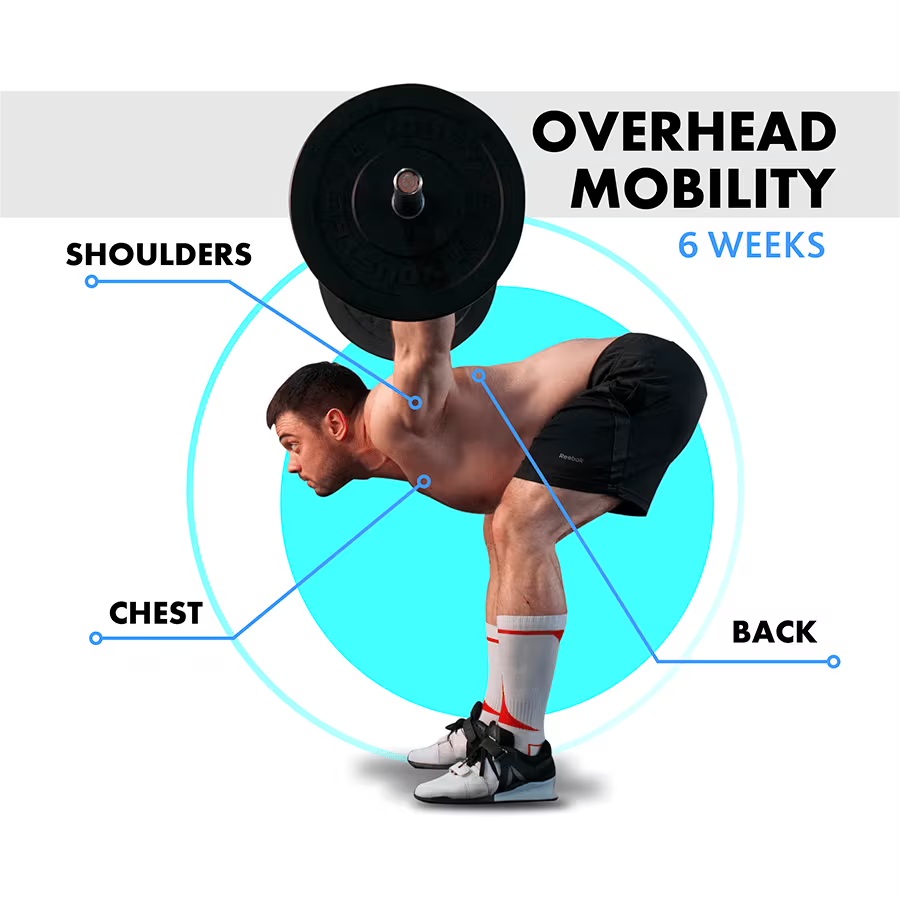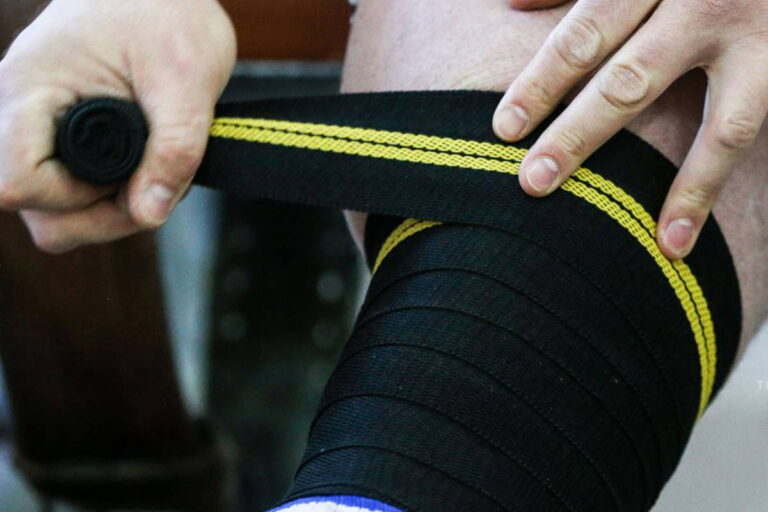10 Shoulder Mobility Exercises & Stretches Explained
Be honest, I bet you’re here because you’re eager to find the ultimate guide on shoulder mobility exercises, right? Well, you’re in luck! This is the perfect spot for discovering why shoulder flexibility exercises are essential and how they can drastically improve shoulder mobility. We’ll answer pressing questions like: “What are the best stretches to open shoulders?” and “How often should I do stretches for shoulder mobility?” Don’t worry, we’ve got you covered. Let’s dive in and elevate your shoulder game together, unlocking a world of pain-free movement and increased functionality!
Shoulder mobility exercises and shoulder mobility stretches are key to unlocking your full potential. Learn how to increase shoulder mobility and gain freedom of movement, strength, and a reduced risk of injury.
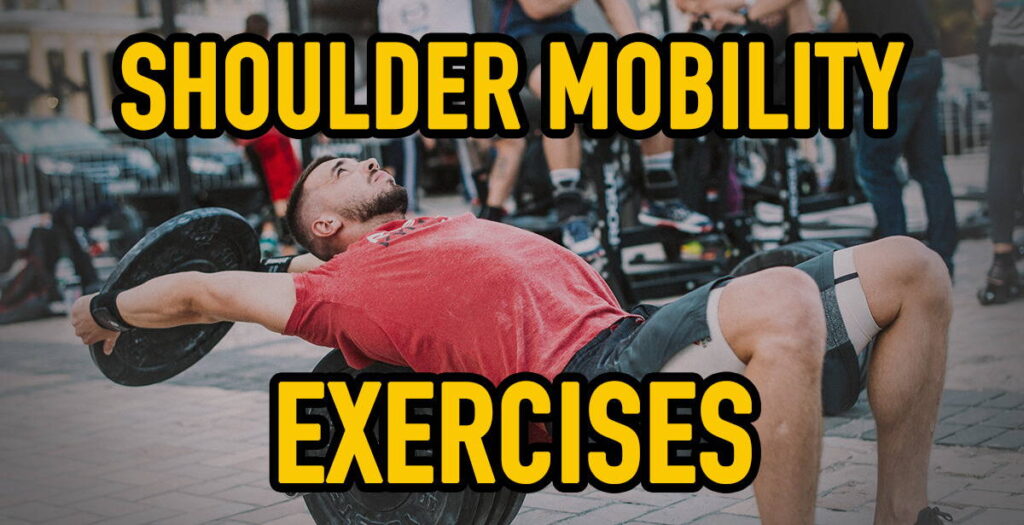
Shoulder Mobility Exercises: General Description
Shoulder mobility exercises focus on improving the flexibility, strength, and range of motion in the shoulder joint. These exercises often target the deltoids, rotator cuff muscles, trapezius, and the various smaller stabilizing muscles surrounding the shoulder. Incorporating a shoulder mobility routine into your workout regimen can help prevent injuries, alleviate discomfort, and enhance your overall athletic performance. Shoulder mobility drills and dynamic shoulder stretches are just a few of the methods you can use to improve the functionality of this complex joint.
How to Test My Shoulder Mobility
Before diving into shoulder mobility exercises, it’s important to assess your current shoulder mobility. Here’s a simple test you can perform at home:
- Stand with your back flat against a wall, with your feet about hip-width apart.
- Place your arms at your sides, keeping your elbows and wrists in contact with the wall.
- Slowly raise your arms overhead, maintaining contact between your elbows, wrists, and the wall throughout the movement.
- Assess your mobility by determining if your arms can reach the wall above your head without arching your lower back or losing contact with the wall.
If you struggle to keep your arms against the wall, or you experience discomfort during the test, it’s a sign that your shoulder mobility could use some improvement.
What Causes Lack of Shoulder Mobility?
Numerous contributing factors can lead to limited shoulder mobility, and comprehending these underlying causes is essential. By doing so, you can effectively customize your shoulder mobility routine to tackle particular problems that may be impacting your shoulder health and range of motion.
Sedentary Lifestyle and Poor Posture
Sitting for extended durations, particularly with inadequate posture, can result in tightness throughout the chest, upper back, and shoulder muscles. This tightness can significantly limit the range of motion in your shoulders. Incorporating shoulder mobility drills and dynamic shoulder stretches into your daily routine can help counteract the adverse effects of a sedentary lifestyle. Furthermore, setting reminders to take frequent breaks to stand and stretch throughout the day, as well as adjusting your workstation ergonomics, can also assist in alleviating muscle tightness and promoting overall shoulder health.
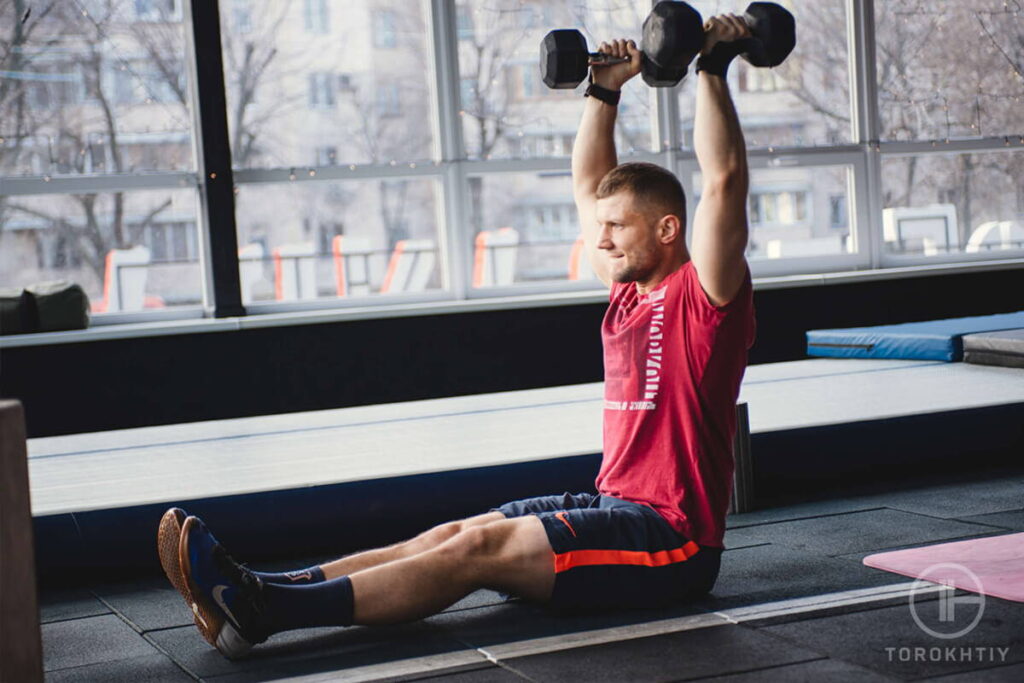
Overtraining and Muscle Imbalances
Focusing excessively on specific muscle groups or exercises can create imbalances that hinder shoulder mobility. For instance, an overemphasis on chest workouts without equal attention to the upper back muscles can lead to rounded shoulders, limiting mobility. Addressing these imbalances through a well-rounded shoulder mobility routine can help restore proper shoulder function. To achieve this balance, ensure that your workout regimen includes exercises that target the full range of muscles surrounding the shoulder joint, including the rotator cuff, deltoids, trapezius, and rhomboids. This comprehensive approach will promote optimal shoulder health and prevent mobility issues.
Injuries and Scar Tissue
Injuries, such as rotator cuff tears or dislocations, can cause a buildup of scar tissue in the shoulder joint, reducing mobility. Even after an injury has healed, the scar tissue can remain, restricting movement. Incorporating shoulder mobility exercises and stretches into your rehabilitation plan can help break down scar tissue and restore a healthy range of motion. Additionally, working with a physiotherapist or a certified trainer who specializes in shoulder rehabilitation can provide you with personalized guidance and support throughout the recovery process, helping you regain optimal shoulder function more effectively and safely.
Age-Related Stiffness
As we age, our muscles and tendons naturally lose some of their elasticity, which can result in decreased shoulder mobility. Regularly practicing shoulder mobility drills can help counteract this age-related stiffness and maintain a healthy range of motion. Additionally, incorporating other forms of exercise, such as yoga or Pilates, can enhance flexibility and muscle control throughout the entire body, further supporting shoulder health. Staying consistent with your mobility routine and adapting it as needed to accommodate your changing needs can greatly contribute to preserving shoulder function and overall quality of life as you age.

Inadequate Care
Skipping proper warm-up and cool-down routines can lead to shoulder stiffness and tightness. Make sure to include a dynamic shoulder stretch in your warm-up and static shoulder stretches during your cool-down to maintain and improve shoulder mobility. A thorough warm-up not only prepares the muscles for the upcoming workout, but also increases blood flow and joint lubrication, ensuring that your shoulders are primed for optimal performance. Similarly, a proper cool-down helps to gradually return your body to its resting state and prevent the buildup of lactic acid, which can contribute to muscle soreness and stiffness. By consistently including warm-up and cool-down routines in your workout regimen, you can greatly enhance your shoulder mobility and overall fitness experience.
Benefits of Doing Shoulder Mobility Exercises
Practicing shoulder mobility exercises can yield numerous benefits, from improved athletic performance to injury prevention. Here are six key advantages you can gain by incorporating stretches for shoulder mobility and a shoulder mobility routine into your regular fitness regimen:
Reduced Risk of Injury
One of the most significant benefits of shoulder mobility exercises is the reduced risk of injury. The shoulder joint is susceptible to various injuries due to its wide range of motion and complex structure. By performing stretches for tight shoulders and incorporating a shoulder mobility routine, you can strengthen the muscles and tendons surrounding the joint, providing increased stability and support. This added stability helps prevent common shoulder injuries, such as rotator cuff tears, dislocations, and impingement.
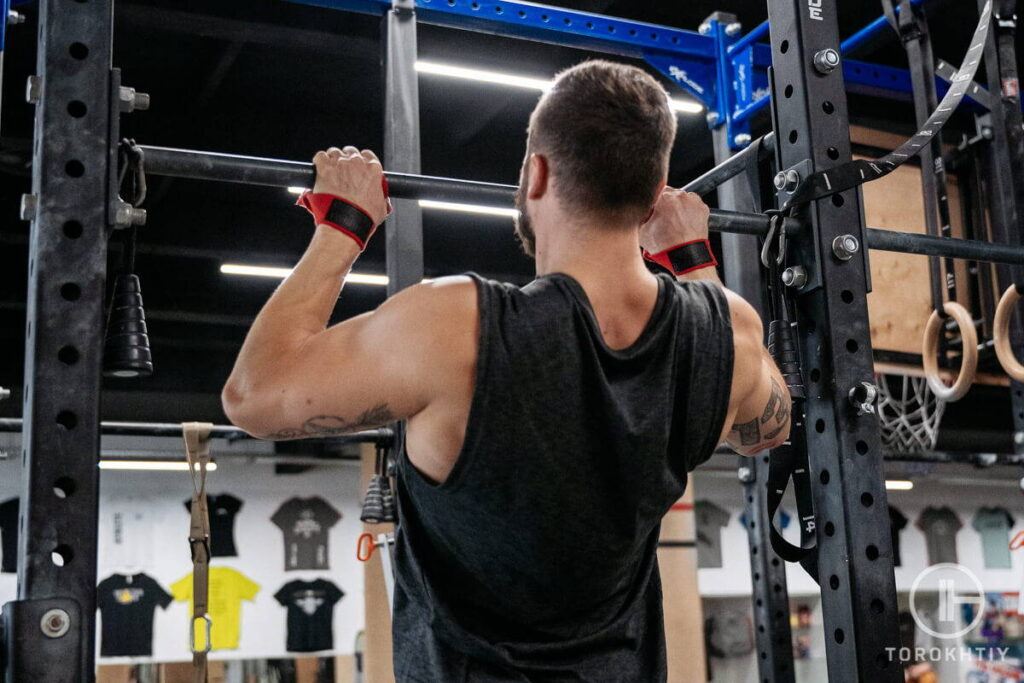
Improved Posture
A consistent shoulder mobility routine can help improve your posture by addressing muscle imbalances and tightness that contribute to slouched or rounded shoulders. Stretches for tight shoulders target the muscles of the chest, upper back, and shoulders, helping to correct imbalances and promote proper alignment. With improved posture, you’ll not only look taller and more confident, but you’ll also experience reduced strain on your spine and neck, which can alleviate discomfort and prevent long-term issues.
Enhanced Athletic Performance
Incorporating shoulder mobility exercises into your fitness routine can lead to improved athletic performance. Many sports and physical activities require a healthy range of motion in the shoulder joint for optimal performance, such as swimming, tennis, baseball, and weightlifting. Stretches for shoulder mobility and a targeted shoulder mobility routine can help you achieve a greater range of motion, allowing you to generate more power, speed, and control in your chosen sport.
Increased Strength and Stability
A well-rounded shoulder mobility routine not only improves flexibility but also contributes to increased strength and stability in the shoulder joint. By targeting the various muscles that support the shoulder, including the rotator cuff muscles, deltoids, and upper back muscles, you can enhance your overall shoulder strength. This increased strength and stability can help you lift heavier weights, perform more advanced bodyweight exercises, and reduce the likelihood of injury during your workouts.
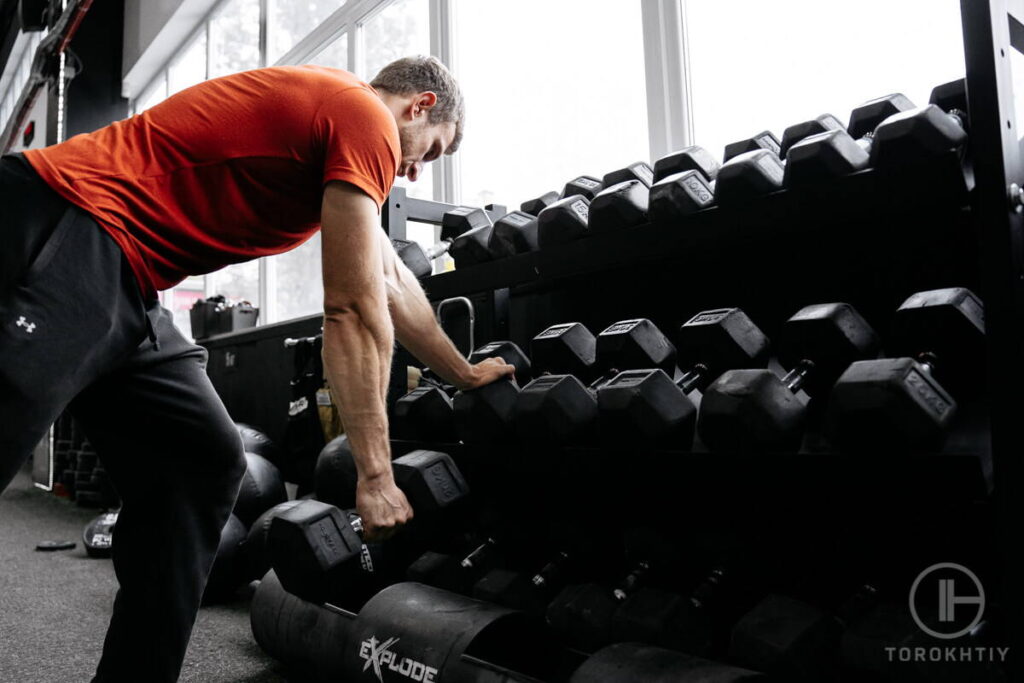
Alleviation of Discomfort and Pain
Many people experience shoulder discomfort or pain due to tightness, muscle imbalances, or previous injuries. Stretches for tight shoulders and a dedicated shoulder mobility routine can help alleviate this discomfort by improving flexibility, promoting proper alignment, and strengthening the supporting muscles. Regularly practicing shoulder mobility exercises can also help prevent the recurrence of pain and discomfort, allowing you to enjoy your daily activities and workouts without limitations.
Faster Recovery and Rehabilitation
If you’ve suffered a shoulder injury, incorporating shoulder mobility exercises into your rehabilitation plan can help speed up your recovery. By gently working the muscles, tendons, and ligaments surrounding the injured area, you can promote blood flow and nutrient delivery, which are essential for healing. Shoulder mobility exercises can also help break down scar tissue and restore a healthy range of motion, allowing you to return to your normal activities and workouts more quickly.
Better Functional Movement
Incorporating shoulder mobility exercises into your fitness routine can lead to improved functional movement in everyday life. Having greater shoulder flexibility and strength allows you to perform daily tasks, such as reaching overhead, lifting objects, and carrying items, with greater ease and less strain on your muscles and joints. This improvement in functional movement is crucial for maintaining independence as you age, making it easier to accomplish routine activities without assistance.
Improved shoulder mobility can also contribute to better overall body mechanics, as the shoulders play a vital role in connecting the upper and lower body. This connection facilitates efficient transfer of force during daily activities, such as pushing, pulling, or lifting. By enhancing shoulder mobility, you can optimize this force transfer, which can lead to improved efficiency in movement and decreased stress on other joints, such as the spine or hips.
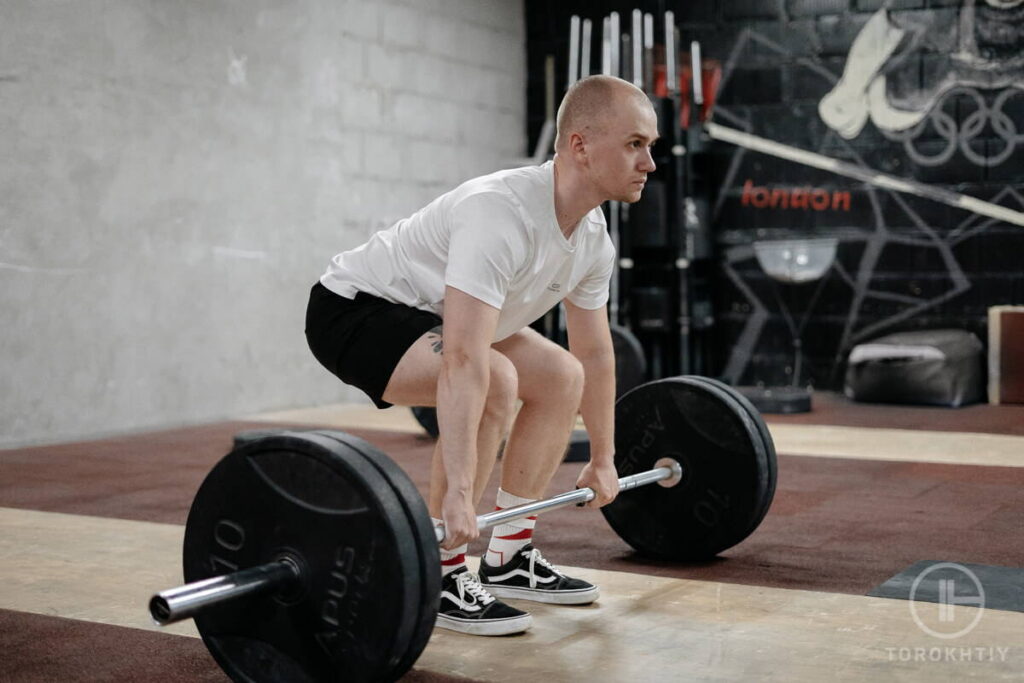
Even Muscle Development
Consistent shoulder mobility exercises promote balanced muscle development in the shoulder girdle. By targeting all the muscles surrounding the shoulder joint, including the rotator cuff, deltoids, and scapular stabilizers, you can achieve a more balanced and aesthetically pleasing physique. This balanced development also contributes to better overall shoulder function and reduced risk of muscle imbalances that can lead to injury or discomfort.
Balanced muscle development is essential for maintaining proper biomechanics and preventing overuse injuries. When one muscle group is disproportionately stronger than another, it can cause excessive strain on the weaker muscles, tendons, and ligaments, leading to increased wear and tear over time. By ensuring all the shoulder muscles are developed evenly, you can minimize these imbalances and promote long-term joint health
🔻OVERHEAD MOBILITY CYCLE Program
Boost Your Overhead Mobility!
Pro or beginner, our Overhead Mobility Program is your key to success.
Why Choose?
- 🏋️ Master Olympic weightlifting, from beginner to pro.
- 💪 Boost upper body mobility and joint strength.
- 🚀 Solidify your confidence in overhead movements.
- 🥇 Achieve new personal bests.
- 🎯 Benefit from 60+ unique exercises.
- 📈 5 tests to track your progress.
- ⏰ 18 efficient 30-minute workouts.
- 📹 120 video guides.
- 🔒 Lifetime access for success anytime, anywhere.
Don’t wait – unlock your potential today! 🚀
Shoulder Mobility Exercises for Peak Performance
To achieve peak performance and improve shoulder mobility, incorporate these essential exercises into your routine. These shoulder mobility stretches and exercises target various muscles and movements, helping you develop a well-rounded shoulder mobility routine and increase shoulder mobility.
Scapular Wall Slides
Scapular wall slides help to strengthen the muscles around the shoulder blades and improve shoulder mobility. This exercise is particularly useful for addressing postural issues and promoting proper scapular movement.
- Stand with your back flat against a wall, feet shoulder-width apart.
- Place your arms in a “W” position, with your elbows, wrists, and the back of your hands against the wall.
- Slide your hands up the wall, straightening your arms into a “Y” position while keeping contact with the wall.
- Slowly return to the starting position, and repeat for 10-15 reps.
Shoulder Dislocates
This shoulder flexibility exercise is a classic stretch that targets the entire shoulder joint, improving mobility and flexibility.
- Hold a broomstick or resistance band in front of you with a wide grip, palms facing down.
- Keeping your arms straight, lift the broomstick or band overhead and lower it behind your back as far as possible.
- Return to the starting position, and repeat for 10-15 reps.
Resistance Band External Rotation
This exercise helps strengthen the rotator cuff muscles and improve shoulder mobility.
- Secure a resistance band to a sturdy anchor at elbow height.
- Stand sideways to the anchor, holding the band with the hand furthest from the anchor, elbow bent at a 90-degree angle.
- Rotate your arm outward, moving your hand away from your body while keeping your elbow tucked close to your side.
- Slowly return to the starting position, and repeat for 10-15 reps on each arm.
Pendulum Swing
This gentle dynamic shoulder stretch helps to loosen the shoulder joint and surrounding muscles.
- Stand next to a table or chair for support, and bend slightly at the waist.
- Let your arm hang down toward the ground, and gently swing it in circles, gradually increasing the size of the circles.
- After 30 seconds, reverse the direction of the circles, and continue for another 30 seconds before switching to the other arm.
Prone Y Raises
This exercise targets the posterior deltoids, upper back muscles, and rotator cuff muscles, helping to improve shoulder mobility and stability.
- Lie facedown on a bench or exercise ball, with your arms hanging down toward the ground.
- With your palms facing each other, raise your arms up and out to the sides, forming a “Y” shape.
- Slowly lower your arms back to the starting position, and repeat for 10-15 reps.
Cat-Cow Stretch
This yoga-inspired stretch targets the entire shoulder girdle and upper back, helping to improve mobility and flexibility.
- Begin on all fours, with your wrists under your shoulders and your knees under your hips.
- Inhale, and arch your back, lifting your chest and tailbone toward the sky while allowing your stomach to sink toward the floor.
- Exhale, and round your spine, tucking your tailbone and chin while drawing your navel toward your spine.
- Repeat this sequence for 10-15 reps.
Thread the Needle
Thread the needle is a fantastic shoulder mobility exercise that targets the posterior deltoids, rhomboids, and trapezius muscles. This stretch helps improve shoulder mobility, reduces upper back tension, and can alleviate discomfort associated with tight shoulders.
- Start in a tabletop position, with your hands and knees on the ground, ensuring your wrists are directly beneath your shoulders and your knees beneath your hips.
- Lift your right hand off the ground and slide it beneath your left arm, palm facing up, while rotating your upper body to the left.
- Lower your right shoulder and right side of your head to the ground, keeping your left arm extended and left hand planted for support.
- Hold this position for 15-30 seconds, feeling a stretch in the right shoulder and upper back.
- Slowly release the stretch and return to the tabletop position.
- Repeat the stretch on the left side.
- Perform 2-3 sets on each side.
Supine Shoulder Flexion
Supine shoulder flexion is a simple yet effective exercise to improve shoulder mobility by focusing on the anterior and medial deltoids, as well as the pectoral muscles.
- Lie down on your back with your legs extended and feet hip-width apart.
- Hold a lightweight dumbbell or resistance band in each hand, with your palms facing each other.
- Begin with your arms extended at your sides, elbows slightly bent, and hands near your hips.
- Slowly raise your arms up and overhead, keeping your elbows slightly bent and maintaining contact between your lower back and the ground.
- Once your arms are overhead, or as far as your shoulder mobility allows, pause for a moment and feel the stretch.
- Slowly return your arms to the starting position, maintaining control throughout the movement.
- Perform 2-3 sets of 10-15 repetitions.
Prone Arm Circles
Prone arm circles target the posterior shoulder muscles and help improve shoulder mobility, particularly in the rear deltoids, rhomboids, and trapezius.
- Lie face down on a mat or the floor, with your arms extended to your sides, creating a T shape.
- Place your forehead on the mat to maintain a neutral neck position.
- Lift your arms off the ground, engaging your posterior shoulder muscles.
- Slowly make small circles with your arms, focusing on maintaining the engagement of your upper back muscles.
- Perform 10-15 clockwise circles, then switch to counter-clockwise circles for another 10-15 repetitions.
- Perform 2-3 sets of 10-15 repetitions in each direction.
Shoulder CARs (Controlled Articular Rotations)
Shoulder CARs are a mobility exercise that can help improve overall shoulder joint health and range of motion. This exercise is particularly useful for addressing joint restrictions and maintaining joint integrity.
- Stand with your feet shoulder-width apart and engage your core.
- Extend your right arm out to your side, with your thumb pointing upward.
- Slowly rotate your arm in a large, controlled circle, gradually increasing the range of motion as you progress.
- Continue rotating your arm, maintaining a slow, controlled pace, until you complete one full rotation.
- Perform 5-10 rotations in one direction, then switch to the opposite direction for another 5-10 rotations.
- Repeat the exercise with your left arm.
- Perform 2-3 sets of 5-10 rotations in each direction with each arm.
By incorporating these shoulder mobility exercises into your regular fitness routine, you can increase shoulder mobility, enhance your athletic performance, and reduce
your risk of injury. Practice these stretches for tight shoulders, shoulder mobility drills, and static shoulder stretches consistently to see the best results. Remember to listen to your body and progress at a pace that feels comfortable for you, as pushing too hard or too quickly can lead to injury.
FAQ
What Causes Lack of Shoulder Mobility?
Lack of shoulder mobility can be caused by several factors, including muscle imbalances, tightness, inadequate warm-up and cool-down routines, chronic inflammation, or previous injuries. Addressing these issues through targeted exercises and stretches can help improve shoulder mobility.
Why Do I Have Limited Range of Motion in My Shoulders?
A limited range of motion in your shoulders can result from muscle tightness, imbalances, joint stiffness, or scar tissue from past injuries. Consistent shoulder mobility exercises can help improve flexibility and range of motion.
How Long Does it Take to Get Flexible Shoulders?
The time it takes to achieve flexible shoulders varies depending on your starting point, consistency, and dedication to targeted exercises and stretches. With regular practice and patience, most individuals can see noticeable improvements in shoulder flexibility within a few weeks to a few months.
Conclusion
Incorporating shoulder mobility exercises into your fitness routine can yield numerous benefits, including reduced injury risk, improved posture, enhanced athletic performance, increased strength and stability, and alleviation of pain. A well-rounded shoulder mobility routine, featuring targeted exercises and stretches, can help address the causes of limited shoulder mobility and improve overall flexibility. Stay consistent with your practice, and you’ll likely see noticeable improvements in your shoulder health and performance over time.
Ready to rock those shoulder mobility exercises? We’d love to hear from you! Share your experiences, progress, and favorite exercises in the comments below. Have you seen improvements in your shoulder mobility? Which of these exercises have made the biggest impact on your fitness journey? Any tips or tricks you’d like to share with fellow readers? Let’s get this shoulder mobility party started and help each other level up our fitness game together!
Also read:
- Trapezius Stretches
- Tricep Stretches
- Lat Stretches
- Shoulder Warm up Exercises
- Thoracic Mobility Exercises
- Squat Stretches
- Overhead Squat
References:
- 10 Shoulder Mobility Exercises and Stretches // Healthline: https://www.healthline.com/health/ shoulder-mobility-exercises
- Overtraining Syndrome: Warning Signs and How to Cut Back // Verywellfit: https://www.verywellfit.com/ overtraining-syndrome-and-athletes-3119386
- How To Work Around A Rotator Cuff Injury // Barbend: https://barbend.com/rotator-cuff-injury/
Why Trust Us?
With over 20 years in Olympic Weightlifting, our team does its best to provide the audience with ultimate support and meet the needs and requirements of advanced athletes and professional lifters, as well as people who strive to open new opportunities and develop their physical capabilities with us.
By trusting the recommendations of our certified experts in coaching, nutrition, dietology, and sports training programming, as well as scientific consultants, and physiotherapists, we provide you with thorough, well-considered, and scientifically proven content. All the information given in the articles concerning workout programming, separate exercises, and athletic performance, in general, is based on verified data. We ensure that you can rely on our professionals’ pieces of advice and recommendations that can be treated as personalized ones which will benefit you and fully meet your needs.
The product testing process is described in more detail here
Author: Zinaida Bondarenko
Coach, Physiotherapist
Physical rehabilitation experience: 10 years
Zinaida was a member of the national team of Ukraine in rhythmic gymnastics, accumulating 15 years of professional sports experience. She holds certifications in functional training, rehabilitation, kinesiotherapy, specializing in working with athletes across various domains: recovery, rehabilitation, functional and mobility training, General Physical Preparedness (GPP), as well as injury prevention through specific program design. Moreover, she focuses on athlete and coach education to enhance performance and prevent injuries.

